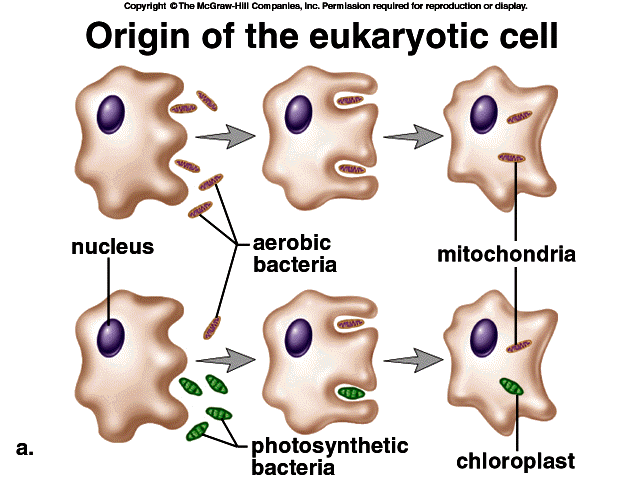1. Discuss the characteristics of the kingdom Protista, and some criteria used in classifying protistans.
2. List the three major groups of protistans and their differences.
3. List the major phyla of the protistans, give some examples of each, and list some beneficial and harmful protistans, including some parasites.
4. List the way protistans differ from bacteria.
5. Define selected key terms.
 LECTURE QUIZ
LECTURE QUIZ
01. List the three major groups of protistans and their differences:
___________________________________________________________________________________________________
___________________________________________________________________________________________________
___________________________________________________________________________________________________
02. Parasitic, flagellated protozoans of tropical regions known as trypanosomes are associated with which disease(s): a. malaria, b. toxoplasmosis, c. African sleeping sickness and Chagas disease, d. amoebic dysentery, e. all of the above. (Select the best answer.)
_____________
03. In what kingdom are the algae (Chlorophyta, Phaeophyta, and Rhodophyta) classified?
______________________________________________________________________
04. What are red tides?
___________________________________________________________________________________________________
05. What organism may cause malaria?
______________________________________________________________________
06. What organism is the vector of malaria?
______________________________________________________________________
07. Identify (name) the life cycle of animal-like protista and give an example of a phylum in the animal-like protista:
_________________________________________ ________________________________________________
08. Identify (name) the life cycle of mold-like protista and give an example of a phylum in the mold-like protista:
_________________________________________ ________________________________________________
09. Identify (name) the life cycle of plant-like protista and give an example of a phylum in the plant-like protista:
_________________________________________ ________________________________________________
10. Give the common name of the following phyla, indicate which one of the three major groups of protista (plant-like, mold-like, or animal-like), and give an example of an organism in the phylum:
a. Sarcodina: ______________________________ ______________________________ ____________________________
b. Ciliophora: _____________________________ ______________________________ ____________________________
c. Chlorophyta: ____________________________ ______________________________ ____________________________
d. Phaeophyta: _____________________________ _____________________________ ____________________________
e. Sporozoa: _______________________________ _____________________________ ____________________________
11 i. Select the best answer(s). The figure below explains
 a. the origin of eukaryotic cells
a. the origin of eukaryotic cells
 b. the endosymbiotic theory (hypothesis)
b. the endosymbiotic theory (hypothesis)
 c. that mitochondria and chloroplasts were once free-living organisms
c. that mitochondria and chloroplasts were once free-living organisms
 d. how unicellular organisms (like Amoebas) eat (engulf food)
d. how unicellular organisms (like Amoebas) eat (engulf food)
 e. a & b
e. a & b
 f. a, b & c
f. a, b & c _________
_________
 g. a, b, c &d
g. a, b, c &d
11 ii. Explain the figure:
___________________________________________________________________________________________
___________________________________________________________________________________________
___________________________________________________________________________________________
Web page layout and design © and intellectual property Jan A. Nilsson, 1997, 1998, 1999, 2000, 2001, 2002, 2003, 2004. Page created 19.IX.2001, last updated 13.II.2004, most likely during the wee hours of the morning on a G3 PowerBook owned by Jan A. Nilsson.
-- Disclaimer: "Dr. Nilsson's CyberOffice", at the time of writing located as a file under the South Texas Community College's (STCC) web server with the general URL http://stcc.cc.tx.us/, is the intellectual property of Dr. Jan A. Nilsson, member of STCC biology faculty. The content of Dr. Nilsson's CyberOffice does not necessarily reflect the opinions and beliefs of the STCC faculty, staff, administration, and Board of Trustees.
LECTURE QUIZ
![]() a. the origin of eukaryotic cells
a. the origin of eukaryotic cells![]() b. the endosymbiotic theory (hypothesis)
b. the endosymbiotic theory (hypothesis)![]() c. that mitochondria and chloroplasts were once free-living organisms
c. that mitochondria and chloroplasts were once free-living organisms![]() d. how unicellular organisms (like Amoebas) eat (engulf food)
d. how unicellular organisms (like Amoebas) eat (engulf food)![]() e. a & b
e. a & b![]() f. a, b & c
f. a, b & c![]() _________
_________![]() g. a, b, c &d
g. a, b, c &d